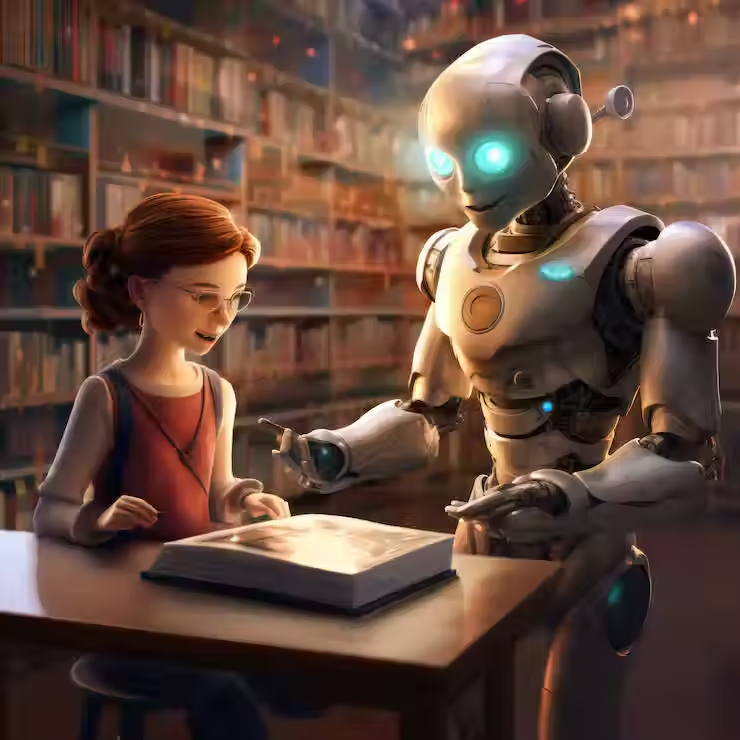Should AI Be in Every Classroom?
- marketing84542
- Jun 2
- 4 min read
Updated: Jul 7

In a world where artificial intelligence (AI) is shaping industries and revolutionising the way we live and work, the question isn't just if AI should be part of education—it’s how soon can we meaningfully integrate it into classrooms. For students aged 6–14, this isn’t a distant concern. Today’s learners are growing up in a reality where AI is as common as calculators once were.
So, should AI be in every classroom? The short answer: yes—if done thoughtfully.
Let’s explore why.
The Growing Role of AI in Classrooms
AI isn't just for Silicon Valley engineers anymore. Increasingly, schools are adopting AI tools for educators that streamline lesson planning, customise learning, and provide real-time feedback on student progress. These technologies are proving especially helpful in diverse classrooms where learners have varying needs, paces, and interests.
One of the most transformative benefits? Engagement.
AI-powered platforms use gamified content, personalized feedback, and adaptive learning paths to keep students motivated. Whether it’s practicing fractions, writing essays, or diving into science topics, AI can make traditionally “dry” subjects more dynamic and interactive.
Personalized Learning That Actually Works
For decades, educators have talked about differentiating instruction. But in practice, it’s incredibly challenging to tailor lessons to 25 different students in real time. AI tools for classroom management and adaptive instruction make this dream more feasible.
Tools like LittleLit, a child-safe AI platform, allow schools to personalise lessons in math, reading, writing, and more. Their AI model responds to each student’s learning style, pace, and knowledge gaps—whether it's a 6-year-old learning to read or a 13-year-old tackling geometry.
These AI tools for educational equity are especially impactful in under-resourced schools, where large class sizes often make individualized attention difficult.
Supporting Teachers, Not Replacing Them
Let’s be clear: AI is not here to replace teachers. It’s here to empower them.
Teachers today juggle lesson planning, grading, parent communication, behavior management, and administrative tasks—all while trying to build meaningful relationships with students. This is where AI tools for school administration and instruction support can make a real difference.
From grading quizzes to recommending instructional strategies based on student data, AI gives teachers back what they need most—time. Time to mentor, connect, and focus on what only humans can do: inspire.
Additionally, AI tools for teacher professional development are gaining popularity. These platforms offer micro-courses and real-time classroom feedback, helping teachers grow in their craft without overwhelming them with more work.
AI and Remote Learning: Lessons from the Pandemic
The shift to online education during COVID-19 highlighted major gaps in digital learning—and also opened our eyes to what’s possible.
AI tools for remote learning helped educators navigate this new terrain by providing instant feedback, facilitating virtual tutoring, and even managing student engagement. As we move into a hybrid future, these tools remain vital for supporting students who are absent, learning from home, or attending schools that operate on digital models.
AI doesn’t just support content delivery. It ensures continuity and consistency in instruction, regardless of where students are located.
Strengthening the Parent-Teacher Connection
One often-overlooked advantage of AI in education is its ability to improve communication between parents and teachers.
With AI tools for parent-teacher communication, parents can receive automatic updates on their child’s progress, attendance, or homework status. Instead of waiting for quarterly report cards, parents get real-time insights, enabling earlier interventions and more collaborative problem-solving.
This data transparency helps parents become active partners in their child’s education—something especially valuable in today’s fast-paced world.
AI and the Push Toward Equity in Education

One of the strongest arguments for bringing AI into every classroom is its potential to level the playing field.
Traditionally, access to personalised tutoring, enrichment programs, or advanced coursework has been limited to families who can afford it. With tools like LittleLit’s AI tutors, schools can now offer AI-powered learning to every student, regardless of income or zip code.
From reading comprehension to essay writing and math drills, platforms like this are democratizing access to academic support. For schools trying to close achievement gaps, this is a game changer.
Making It Safe: Child-Friendly AI Tools
Parents and educators are understandably cautious about introducing AI to children—and rightly so. The internet is full of content that’s not age-appropriate or developmentally suitable.
That’s why platforms using child-safe AI models, like this one, are crucial. They’re designed specifically for kids aged 6–14, offering secure, ad-free, and educationally vetted content.
These tools aren’t just built for kids—they’re built with children in mind.
Curriculum Integration: From Extra to Essential
Some educators still view AI as an “extra”—something nice to have, but not core to the academic experience. That’s quickly changing.
Forward-thinking schools are already embedding AI curriculum for kids into subjects like math, science, and digital literacy. These aren’t just coding classes—they’re opportunities for students to understand how AI works, how to use it responsibly, and how it’s shaping their world.
Platforms like LittleLit offer ready-to-use AI-aligned curriculum, helping schools take the first step without having to start from scratch. With lesson plans, teacher guides, and assessments built in, these tools make AI integration seamless.
Challenges to Consider
Of course, no new technology comes without challenges. When implementing AI in the classroom, educators and administrators need to consider:
Data privacy: Are student interactions protected and secure?
Teacher training: Are staff comfortable and confident using these tools?
Equity of access: Do all students have access to the necessary devices and internet?
Over-reliance: Are we using AI to complement, not replace, human connection?
These concerns must be addressed thoughtfully—but they shouldn’t stop us from embracing the possibilities.
So… Should AI Be in Every Classroom?
Given the evidence, the answer is clear: Yes, but intentionally.
AI isn’t a silver bullet. But used wisely, it has the power to enhance instruction, streamline classroom management, personalize learning, and improve parent communication. In short, AI can make education more human—not less.
As schools look ahead to the next decade, they’ll need tools that support—not stretch—teachers, and empower—not overwhelm—students. AI meets that need.
Platforms like LittleLit are already leading the way. Whether you’re a teacher looking to differentiate your instruction or a parent seeking meaningful academic support, now is the time to explore how AI can make a difference.
















